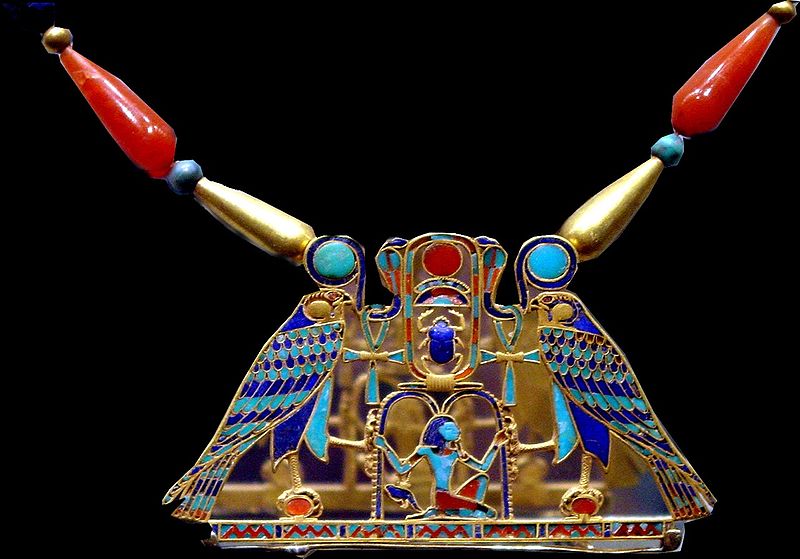During the middle of the 19th century, a young Frenchman by the name of Auguste Mariette was exploring Egypt in search for Coptic manuscripts for the Louvre Museum. He became enamored with the surrounding history of Saqqara(or Sakkara) and Memphis, so much so that he forgot his main purpose. It was at this time that he made one of most startling
discoveries at Serapeum, the tombs of the Apis Bulls.
Statue of Apis at the Louvre Museum
 Source
Source
Auguste Mariette proceeded to hire several workmen and over a four year period, did extensive digging in the area. He soon came to notice a sphinx from the alleged avenue of sphinxes that led to ruins of the Serapeum . It would take him several years to uncover the huge Serapeum, the burial place of the sacred Apis Bulls. At the same time, however, to make up for squandering so much time in the desert, he collected numerous amounts of antiquities for the Louvre Museum.
Upon returning to Egypt, the Khedive of Egypt, Ismail Pasha, appointed him conservator of monuments in 1858 and Mariette spent the rest of his life preserving the Egyptian past. Of course, this position was given to him after he expressed his dissatisfaction as an academic, believing his achievement at the site of Serapeum made him more deserving of a higher position.
The History of the Apis Bulls at Serapeum
 Source
Source ( photo from a private German page by Mr. Erdmann)
The god Apis was an Egyptian fertility deity who became associated with Ptah, who in Memphis was considered to be the creator of the primeval mound. He was known to bring all things to life simply by using words or their specific names. As a manifestation of Ptah, Apis also was considered to be a symbol of the pharaoh, personifying the qualities of kingship. There is a theory that suggests Ptah, called Hwt-ka-Ptah , translated in Greek as Aiguptos. This is the word from which the name of Egypt was derived.
The priests chose either a black or black and white Apis bull to act as an incarnation for Ptah. The bulls would typically live for twenty years or so. In earlier years, the body of the bull would be cooked and eaten by the pharaoh and his priests, leaving behind only scraps to be buried. In later years, the bodies of the Apis Bulls were embalmed and ceremonially buried in a stone sarcophagus, sometimes weighing up to 80 tons.
 Source
Source
The Apis bulls were buried in an underground tomb, now known as Serapeum, which formed a complex of tunnels and porticos. It was here that Auguste Mariette discovered human-headed jars containing the viscera of bulls. Although Serapeum survived into the Christian time, it was finally closed in 398CE.
Auguste Mariette Recollects His Journey
Auguste Mariette remembers his excavations of Serapeum vividly saying, “Serapeum is a temple built without any plan. In certain places the sand is, so to speak, fluid and presents as much difficulty in excavating as if it were water. It was these circumstances that the work proved so long, and I was compelled to spend four years in the desert-four years, however, I can never regret”.








































